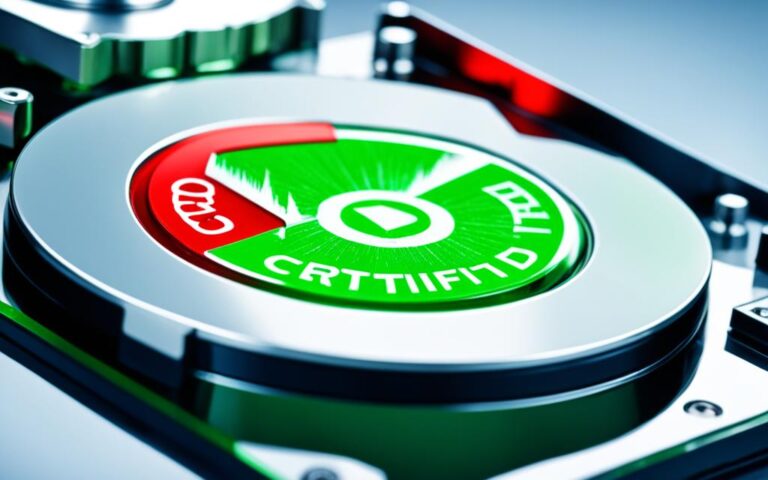Maximizing Security with Data Clearance Techniques
Data breaches in the healthcare sector are on the rise, with cybercriminals exploiting vulnerabilities in healthcare systems. Physicians, including those in independent practices, are at risk of data breaches and cyberattacks. Medical practices can maximise data security and ensure HIPAA compliance by providing cybersecurity training to staff, using HIPAA-compliant communications technology, implementing multifactor authentication, limiting access to ePHI, and keeping software updated. These proactive steps can help prevent costly data breaches and protect sensitive health information.
Importance of Cybersecurity Training for Staff
Human error is the primary cause of data breaches in the healthcare industry. To protect data security and ensure compliance with HIPAA regulations, it is crucial to provide cybersecurity training to all staff members in medical practices.
Training should focus on educating staff about the consequences of data breaches and raising awareness about the various cyber threats targeting healthcare organizations. By equipping staff with knowledge and best practices for cybersecurity, such as using strong passwords and avoiding unsecure networks, medical practices can significantly reduce the risk of data breaches.
“Securing sensitive patient information is not solely the responsibility of IT professionals; it requires a collective effort from every individual within the organization. Cybersecurity training empowers staff to be the first line of defense against cyber threats.”
Awareness about data breaches and cybersecurity practices should be an ongoing process, with regular training sessions, updates, and reminders. By instilling a culture of cybersecurity awareness and responsibility, medical practices can enhance data protection and maintain the integrity of sensitive patient information.
The Consequences of Inadequate Cybersecurity Training
The consequences of inadequate cybersecurity training can be detrimental to both medical practices and patients. Without proper training, staff members may unknowingly engage in risky online behaviors or fall victim to phishing attacks, leading to data breaches and compromised patient information. The repercussions of data breaches include financial losses, damage to the organization’s reputation, and legal implications due to non-compliance with data protection regulations.
The Role of Staff in Preventing Data Breaches
Staff members play a critical role in preventing data breaches within medical practices. By receiving comprehensive cybersecurity training, they become more vigilant in identifying and reporting potential threats. They are better equipped to handle suspicious emails, protect sensitive information, and promptly respond to security incidents. Through regular training and reinforcement, staff members become proactive defenders of data security, safeguarding confidential patient data from cybercriminals.
Cybersecurity training not only benefits individual staff members but also strengthens the overall security posture of the healthcare industry. By prioritizing staff education and awareness, medical practices can effectively mitigate cybersecurity risks, protect patient data, and contribute to maintaining the trust of the patients they serve.
Using HIPAA-Compliant Communications Technology
Medical practices can enhance data security and protect patient privacy by utilizing HIPAA-compliant communications technology. These specialized mobile messaging and collaboration platforms are specifically designed to safeguard electronic protected health information (ePHI), ensuring the integrity and confidentiality of patient data.
One such platform is SecureChat, a leading HIPAA-compliant communications solution that offers end-to-end encryption and robust administrative controls. With SecureChat, healthcare professionals can securely exchange sensitive information, such as medical test results, treatment plans, and other confidential patient data.
The use of HIPAA-compliant communications technology provides several key benefits:
- End-to-End Encryption: HIPAA-compliant platforms employ advanced encryption protocols to protect data both at rest and in transit. This ensures that ePHI remains secure while being transmitted between healthcare providers and other authorized parties.
- Strong Administrative Controls: These platforms offer robust administrative features that enable medical practices to manage user access, permissions, and audit trails. By maintaining strict control over who can access patient data, healthcare organizations can significantly reduce the risk of unauthorized disclosure or data breaches.
- Prevention of Unauthorized Access and Tampering: Secure mobile messaging tools implemented within HIPAA-compliant platforms prevent unauthorized access to patient data. Additionally, data integrity controls prevent tampering or alteration of ePHI, ensuring that information remains accurate and reliable.
By leveraging HIPAA-compliant communications technology like SecureChat, medical practices can effectively mitigate cyber threats, safeguard patient privacy, and maintain compliance with HIPAA regulations.
“The implementation of HIPAA-compliant communications platforms has revolutionized the way healthcare professionals securely exchange sensitive patient information. With robust encryption and administrative controls, these technologies offer peace of mind while enhancing overall data security.” – Dr. Sarah Thompson, Chief Information Officer at ABC Medical Practice
Comparison of HIPAA-Compliant Communications Platforms
| Features | SecureChat | CommsSafe | HealthShield |
|---|---|---|---|
| End-to-End Encryption | ✓ | ✓ | ✓ |
| Administrative Controls | ✓ | ✓ | ✓ |
| Message Recall Function | ✓ | ✓ | ✗ |
| Attachment Support | ✓ | ✗ | ✓ |
| Integration with EHR Systems | ✓ | ✓ | ✗ |
Implementing Multifactor Authentication
Multifactor authentication is a powerful security measure that adds an extra layer of protection for accessing sensitive data. By implementing multifactor authentication, medical practices can significantly reduce the risk of unauthorized access to electronic protected health information (ePHI).
With multifactor authentication, users are required to provide two or more verification factors before gaining access. These factors can include a combination of a username, password, one-time use code, or even biometric authentication such as a fingerprint or facial recognition.
This additional layer of security ensures that even if one factor, such as a password, is compromised, the sensitive data remains protected. Cybercriminals would require multiple pieces of information or characteristics to successfully breach the system and access the ePHI.
Implementing multifactor authentication is crucial for safeguarding sensitive data and enhancing cyber security in medical practices. It establishes a robust defense against cybercriminals who constantly seek to exploit vulnerabilities.
“Multifactor authentication is like having multiple locks on the door. Even if one lock is picked, the others provide an impenetrable barrier, ensuring the protection of sensitive data.”
By combining different verification factors, multifactor authentication provides an additional layer of security. It reinforces the integrity and confidentiality of ePHI, protecting it from unauthorized access and potential data breaches. This is especially crucial in the healthcare industry, where the confidentiality of patient records is of utmost importance.
Advantages of Multifactor Authentication:
- Enhanced security: Multifactor authentication significantly reduces the risk of unauthorized access and data breaches.
- Protection of sensitive data: By requiring multiple verification factors, sensitive data, including ePHI, is well-protected.
- Deterrence of cybercriminals: Multifactor authentication creates a formidable barrier for cybercriminals, discouraging them from attempting to breach the system.
- Compliance with regulations: Implementing multifactor authentication ensures medical practices are in compliance with HIPAA regulations and other industry standards.
- Peace of mind for patients: Knowing that their sensitive health information is protected with multifactor authentication provides patients with peace of mind.
| Benefits of Multifactor Authentication | Explanation |
|---|---|
| Enhanced Security | By requiring multiple verification factors, multifactor authentication significantly reduces the risk of unauthorized access and data breaches. |
| Protection of Sensitive Data | Multifactor authentication ensures that even if one factor is compromised, sensitive data remains well-protected. |
| Deterrence of Cybercriminals | The additional layer of security provided by multifactor authentication discourages cybercriminals from attempting to breach the system. |
| Compliance with Regulations | Implementing multifactor authentication ensures medical practices are in compliance with HIPAA regulations and industry standards. |
| Peace of Mind for Patients | Knowing that their sensitive health information is protected with multifactor authentication provides patients with peace of mind. |
Implementing multifactor authentication is an essential step in strengthening cyber security and safeguarding sensitive data in medical practices. By combining multiple verification factors, medical practices can effectively combat the increasing threats posed by cybercriminals and protect the confidentiality of patient records.
Limiting Access to ePHI
Ensuring the security, integrity, and privacy of electronic protected health information (ePHI) is paramount in medical practices. To achieve this, access to ePHI should be restricted to authorized staff only. By implementing strong access controls and regularly reviewing and updating user access privileges based on job roles and responsibilities, medical practices can minimize the risk of data breaches and maintain compliance with HIPAA regulations. Limiting access to ePHI is crucial in safeguarding sensitive patient information and preserving the trust and confidentiality expected in the healthcare industry.
Implementing access control measures is necessary to protect ePHI from unauthorized access or disclosure. By using authentication mechanisms such as unique usernames and strong passwords, medical practices can ensure that only authorized personnel can access sensitive data. Additionally, multifactor authentication can add an extra layer of security, requiring users to provide multiple verification factors for access.
To further enhance access control, medical practices should regularly review and update user access privileges based on job roles and responsibilities. This helps ensure that employees have the appropriate level of access needed to perform their duties, minimizing the risk of data breaches resulting from unnecessary access permissions. Regular audits and assessments are essential to identify any potential vulnerabilities or unauthorized access attempts.
By limiting access to ePHI, medical practices demonstrate their commitment to HIPAA compliance and protecting sensitive health information. This proactive approach not only safeguards patient privacy but also helps mitigate the financial and reputational consequences of data breaches. It is essential for healthcare organizations to prioritize access control measures as part of their overall data security strategy.
https://www.youtube.com/watch?v=9JyWC6Lx6fw
The Importance of Regular Access Reviews
Regular access reviews play a crucial role in maintaining the integrity of access control measures. By periodically assessing user access privileges and reviewing the permissions granted to staff members, medical practices can ensure that access rights are aligned with the principle of least privilege. This principle limits users’ access to only the resources necessary to perform their roles effectively.
“Regular access reviews help identify any discrepancies or anomalies in user access privileges. By promptly addressing these issues, medical practices can minimize the risk of unauthorized access to ePHI and prevent potential data breaches. It also ensures compliance with HIPAA regulations and reinforces the organization’s commitment to safeguarding patient information.”
During access reviews, it is essential to analyze users’ access history, review any access requests or changes, and verify the relevance of access permissions based on user roles. This process helps identify and revoke any unnecessary or outdated access privileges, reducing the overall attack surface and potential vulnerabilities.
Conducting regular access reviews not only strengthens access controls but also promotes a culture of accountability and responsibility within the organization. It demonstrates the commitment to protecting ePHI and ensures that access privileges are properly aligned with business requirements and HIPAA compliance standards.
Keeping Software Updated
Regularly updating software is crucial for staying HIPAA compliant and reducing security vulnerabilities. Software updates often include patches that fix security flaws and protect against malware and other cyber threats. To ensure the integrity and security of patient information, medical practices should implement a robust process for keeping their software up to date.
Why Software Updates Matter
Software updates are more than just cosmetic changes or feature enhancements. They often address critical security vulnerabilities that cybercriminals can exploit to gain unauthorized access to sensitive data. By promptly installing software updates, medical practices can proactively protect their systems and prevent potential breaches that could compromise patient privacy and trust.
The Risks of Delaying Software Updates
Delaying software updates poses significant risks to medical practices, including:
- Increased vulnerability to cyberattacks
- Exposure to new security threats
- Potential HIPAA violations
- Compromised patient data
- Reputational damage
- Fines and legal consequences
Given the serious consequences of neglecting software updates, medical practices must prioritize this task and allocate resources accordingly.
Establishing a Software Update Process
- Regularly check for updates: Medical practices should implement a routine schedule for checking software vendors’ websites, official support channels, or notifications within the software itself. This will ensure that no critical updates or security patches are missed.
- Automate updates if possible: Some software applications allow for automatic updates, streamlining the process and reducing the likelihood of overlooking crucial updates. However, it is essential to verify the settings and ensure automatic updates do not conflict with any other software or systems.
- Test updates before deployment: Before installing updates across all devices, medical practices should test them in a controlled environment to identify any conflicts or issues they may cause. This testing phase helps mitigate any potential disruptions to daily operations.
- Ensure antivirus software is up to date: Alongside software updates, medical practices should also update antivirus software regularly. This will provide an added layer of protection against potential threats.
- Maintain proper documentation: Medical practices should keep a record of all software updates installed, including their dates and any associated security fixes. This documentation can serve as evidence of compliance with HIPAA regulations in the event of an audit or investigation.
“Regular software updates are a proactive measure against security vulnerabilities and potential data breaches. By staying up to date, medical practices can demonstrate their commitment to safeguarding patient information and maintaining HIPAA compliance.”
A Visual Representation of the Importance of Software Updates
| Without Software Updates | With Regular Software Updates |
|---|---|
| Increased vulnerability to cyberattacks Higher risk of data breaches Potential HIPAA violations |
Enhanced security Protection against emerging threats Maintained HIPAA compliance |
Conclusion
Maximising data security and ensuring HIPAA compliance is essential for protecting sensitive information in the healthcare industry. With the growing threat of data breaches and cyberattacks, medical practices must take proactive measures to safeguard their digital security.
Cybersecurity training for staff is crucial in preventing human error that often leads to data breaches. By educating employees about the potential consequences of breaches and promoting best practices, medical practices can reduce the risk of security incidents.
Using HIPAA-compliant communications technology adds an extra layer of protection to electronic protected health information (ePHI). These platforms provide end-to-end encryption and strong administrative controls, ensuring patient privacy.
The implementation of multifactor authentication enhances security measures by requiring additional verification factors before accessing sensitive data. This adds another layer of defense against unauthorized access, further safeguarding patient information.
Limiting access to ePHI and regularly reviewing and updating user privileges based on job roles and responsibilities is crucial to maintain HIPAA compliance. By controlling access, medical practices can minimize the risk of data breaches and protect patient data.
Keeping software updated is essential to reduce security vulnerabilities. Regular updates include patches that fix security flaws and protect against cyber threats. By staying up-to-date with software updates, medical practices can enhance their data security.
In conclusion, applying data clearance techniques, prioritizing digital security, and maintaining HIPAA compliance are vital steps for safeguarding sensitive information in the healthcare industry. By adopting these measures, medical practices can mitigate cyber threats and minimize the financial, reputational, and operational consequences associated with data breaches.
FAQ
What are data clearance techniques?
Data clearance techniques refer to proactive steps that medical practices can take to maximize data security and ensure HIPAA compliance. These techniques include providing cybersecurity training to staff, using HIPAA-compliant communications technology, implementing multifactor authentication, limiting access to ePHI, and keeping software updated.
Why is cybersecurity training important for staff?
Cybersecurity training is essential for protecting data security and ensuring compliance with HIPAA regulations. It helps educate staff on the consequences of data breaches, the types of cyber threats targeting healthcare enterprises, and best practices for cybersecurity. Training includes using strong passwords and avoiding unsecure networks.
How does HIPAA-compliant communications technology help with data security?
HIPAA-compliant communications technology, such as mobile messaging and collaboration platforms, are specifically designed to protect electronic protected health information (ePHI). These platforms offer end-to-end encryption and strong administrative controls, ensuring the security and privacy of patient data.
What is multifactor authentication?
Multifactor authentication adds an extra layer of security by requiring users to provide two or more verification factors to access sensitive data. This can include a combination of a username, password, one-time use code, or biometric authentication. Implementing multifactor authentication helps reduce unauthorized access to ePHI and protect sensitive data from cybercriminals.
Why is it important to limit access to ePHI?
To ensure the security, integrity, and privacy of electronic protected health information (ePHI), medical practices should limit access to this data to authorized staff only. By restricting access to ePHI, medical practices can minimize the risk of data breaches and maintain compliance with HIPAA regulations.
Why is keeping software updated crucial for data security?
Regularly updating software is crucial for staying HIPAA compliant and reducing security vulnerabilities. Software updates often include patches that fix security flaws and protect against malware and other cyber threats. By keeping software updated, medical practices can enhance data security and prevent potential breaches.















